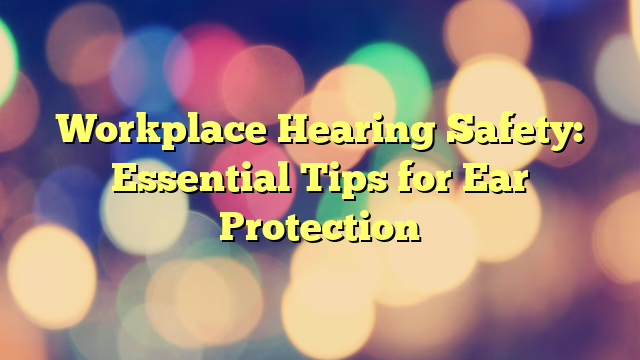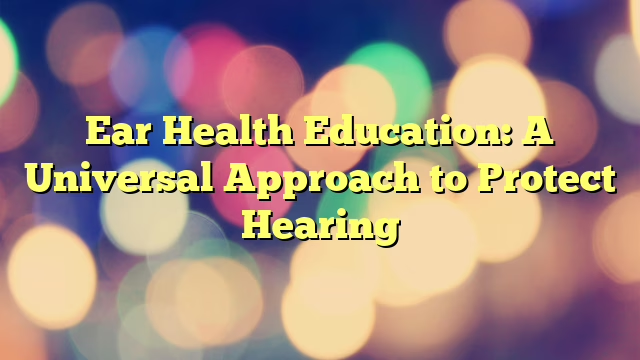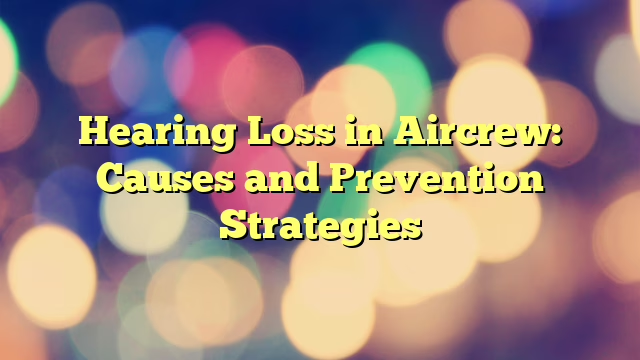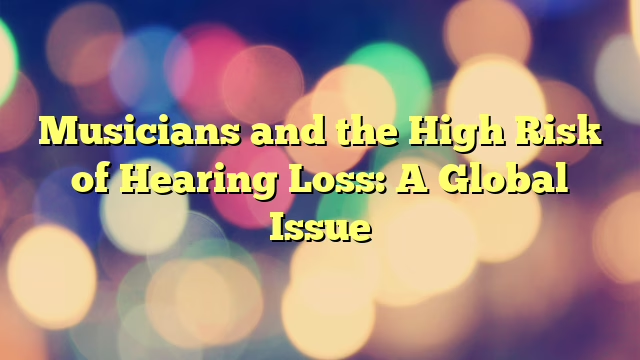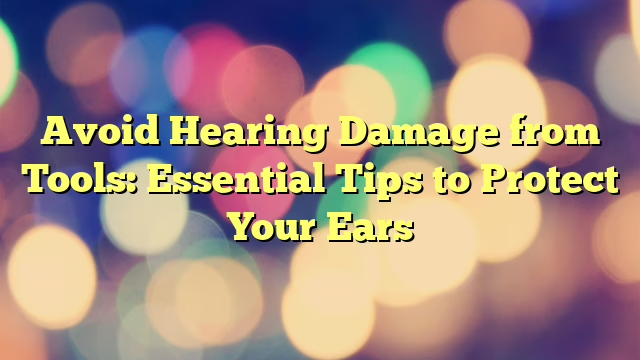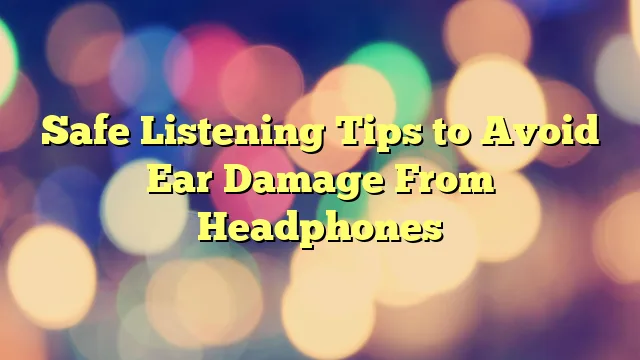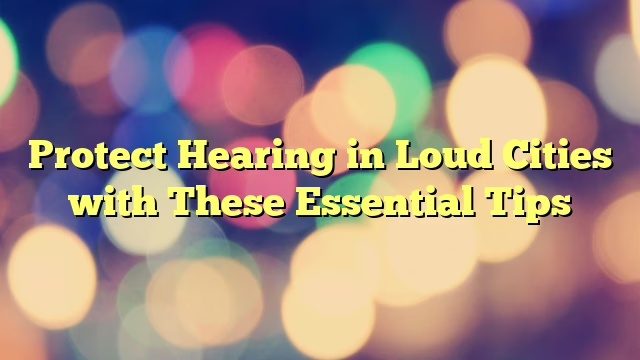Wax Guards in Hearing Aids: Essential Protection Explained

Last Updated on 23/11/2025 by Admin
Maximizing the Benefits of Wax Guards in Hearing Aids
What Exactly Are Wax Guards?
Wax guards serve as crucial filters that protect hearing aids from the buildup of earwax and various debris, which can significantly hinder their performance. These small yet vital components play a key role in maintaining the optimal functionality and durability of hearing aids. While earwax is a natural element of ear health, it can cause substantial damage to electronic devices, creating blockages that impair sound quality and could potentially lead to costly repairs. By integrating wax guards into the design of hearing aids, users can effectively minimize these risks and enhance their listening experience.
Typically crafted from materials engineered to trap earwax while allowing clear sound to pass through, wax guards are strategically positioned at the sound inlet of the hearing aid. They act as the first line of defense against moisture, dirt, and, most importantly, earwax. Hearing aid users often report a marked improvement in sound clarity and reliability when their devices are equipped with wax guards, underscoring their necessity for daily use.
How Do Wax Guards Function to Protect Hearing Aids?
The operation of wax guards is both simple and highly effective. Their primary function is to capture earwax, preventing it from infiltrating the sensitive internal components of the hearing aid. This action ensures that sound transmission remains clear and uninterrupted, enabling users to hear conversations and environmental sounds without distortion. When users speak or encounter ambient noise, the wax guard permits sound waves to flow freely while filtering out any materials that could obstruct sound quality.
While the design of wax guards may differ slightly across various hearing aid models, their fundamental purpose remains consistent. As earwax accumulates, the guard can become saturated, which may affect sound clarity. Hence, timely replacement of these filters is essential for maintaining the performance and effectiveness of hearing aids. Overall, wax guards provide a straightforward yet powerful solution to one of the most prevalent challenges faced by hearing aid users — earwax accumulation.
The Crucial Role of Regular Maintenance for Wax Guards
The importance of regular maintenance for wax guards cannot be overlooked. Like other components in hearing aids, wax guards require periodic care to ensure they continue to function at peak efficiency. Routine cleaning and timely replacement are essential to prevent blockages that can diminish sound quality and lead to other performance-related issues. Below are some key maintenance tips to consider:
- Perform weekly checks on wax guards for any visible signs of wax buildup.
- Replace wax guards every 4-6 weeks, or sooner if blockages are suspected.
- Utilize the correct tools provided by the manufacturer for safe removal and installation.
- Store hearing aids in a dry, clean environment to minimize moisture accumulation.
- Refer to the hearing aid manual for specific maintenance recommendations.
- Keep a supply of spare wax guards for unexpected replacements.
- Consider scheduling routine check-ups with an audiologist for professional cleaning.
- Educate yourself on proper handling techniques to avoid accidental damage.
By incorporating these maintenance practices into a regular routine, users can ensure that their hearing aids operate at optimal levels, significantly enhancing their overall hearing experience.
Exploring Different Types of Wax Guards Available
Users have several options when it comes to wax guards, including both disposable and reusable varieties. Each type is tailored to accommodate different hearing aid models and user preferences, allowing for a flexible approach to earwax management. Disposable wax guards are designed for single-use and are favored for their convenience, making them an ideal choice for users who prioritize quick and easy replacements.
In contrast, reusable wax guards offer a more sustainable alternative for environmentally conscious users. These guards can be cleaned and reused multiple times, although they require diligent maintenance to ensure their continued effectiveness. The decision between disposable and reusable options often hinges on personal preferences, lifestyle choices, and environmental considerations. Understanding the various types available is essential for selecting the most suitable option to meet individual needs.
What Are the Indicators That Your Wax Guard Needs Replacement?
Identifying when to replace wax guards is vital for ensuring the optimal performance of hearing aids. Several telltale signs can indicate that a replacement is necessary. One common sign is experiencing muffled sounds, which suggests that earwax may be obstructing sound passage. Users may also notice whistling noises from their hearing aids, often resulting from inadequate sound transmission due to blocked guards.
Visible wax buildup around the guard serves as another clear indicator that replacement is required. Regular inspections of the wax guards can help prevent these issues from escalating. By remaining vigilant and replacing wax guards when necessary, users can enjoy improved sound quality and overall performance of their hearing aids, minimizing the risk of unnecessary repairs and frustrations.
Insights from Experts on the Essential Role of Wax Guards in Hearing Aids
What Recommendations Do Audiologists Provide Regarding Wax Guards?
Audiologists consistently stress the critical importance of wax guards in protecting hearing aids. They frequently highlight that the regular use of these guards can significantly enhance the reliability and clarity of sound. According to audiologists, employing wax guards is essential for anyone seeking to maintain their hearing aids effectively.
In practice, audiologists advocate various best practices for maintaining these devices. For instance, they typically recommend that patients schedule regular appointments to assess the condition of both the hearing aids and the wax guards. Real-world experiences have shown that patients who follow audiologists’ recommendations tend to encounter fewer issues with their devices. By adhering to guidance on proper cleaning and replacement routines, users can avert common problems and ensure a seamless hearing experience.
How Frequently Should Wax Guards Be Changed?
The frequency of changing wax guards largely depends on individual factors, such as the level of earwax production and the specific hearing aid model in use. As a general guideline, replacing wax guards every month is advisable for optimal performance. However, users with higher earwax production may find it necessary to change them more frequently.
Understanding personal needs can help inform this maintenance schedule. Many audiologists encourage a proactive approach, advising users to integrate regular checks into their routines. By staying attuned to the condition of their wax guards, users can ensure that their hearing aids maintain the best possible sound quality without unexpected interruptions.
What Are the Consequences of Ignoring Wax Guard Maintenance?
Neglecting the upkeep of wax guards can lead to a series of detrimental consequences that compromise both the performance and longevity of hearing aids. One immediate effect is reduced sound quality; earwax blockages can result in muffled sounds or distortions, making conversations or music difficult to enjoy. Over time, such neglect may lead to a complete blockage of the hearing aid, rendering it ineffective.
Continual wear and tear on the device due to unaddressed wax accumulation can also inflict permanent damage on the internal components. This not only incurs repair costs but may also necessitate the complete replacement of the hearing aid. Therefore, establishing a consistent maintenance routine for wax guards is crucial for preserving both the performance and lifespan of these essential devices.
How to Effectively Install Wax Guards?
Proper installation of wax guards is essential for their effectiveness in safeguarding hearing aids. To ensure optimal performance, users should follow a few straightforward steps. Begin by carefully removing the old wax guard from the hearing aid using the specialized tool provided by the manufacturer. This step is crucial to avoid damaging the device during the removal process.
Once the old guard is taken out, take the new wax guard and align it correctly with the sound inlet before gently pressing it into place. Ensuring it is seated securely will prevent any gaps that could allow debris to enter. Common mistakes to avoid include applying excessive force during installation, which can damage the hearing aid or failing to ensure proper alignment, leading to ineffective protection.
By adhering to these steps and being mindful of common pitfalls, users can successfully maintain their hearing aids, ensuring they deliver the best possible sound quality and functionality.
Can Wax Guards Be Reused Safely?
Wax guards are generally designed for single-use, and reusing them is not typically advisable. While some users may consider cleaning and reusing wax guards as a cost-saving measure, this practice can introduce various risks. Reusing wax guards can compromise their filtration effectiveness, as cleaning may not entirely eliminate all built-up earwax and debris.
Moreover, the materials used in wax guards may deteriorate with each use, diminishing their ability to offer adequate protection. To ensure the highest level of performance and hygiene, it is best to use new wax guards for each replacement. This approach minimizes risks and helps maintain the integrity of hearing aids, leading to a more reliable and satisfying user experience.
Varieties of Wax Guards on the Market
Understanding Disposable Wax Guards
Disposable wax guards are highly favored for their convenience and ease of use. Designed for one-time application, these guards can be swiftly replaced, making them an excellent option for users who value a straightforward maintenance routine. Their simplicity means users do not need to engage in cleaning or additional handling — simply remove the old guard and insert a new one.
These guards are generally available for various hearing aid models and can often be purchased in bulk, ensuring that users always have replacements readily accessible. The affordability of disposable wax guards also makes them accessible to a broad range of users, particularly those who may not wish to invest in more complex cleaning solutions. Overall, disposable wax guards provide practical protection against earwax buildup while minimizing the time and effort required for maintenance.
Exploring Reusable Wax Guards
For users seeking a more sustainable alternative, reusable wax guards present an environmentally friendly option compared to conventional disposable guards. These guards can be cleaned and reused multiple times, making them a suitable choice for eco-conscious individuals. While they require more effort to maintain, their longevity and reduced waste make them appealing to many users.
It is essential for users to follow specific cleaning instructions provided by the manufacturer to ensure that reusable guards maintain their effectiveness. Regular cleaning helps preserve their filtration capabilities, ensuring continued protection against earwax and other debris. This option is particularly suited for users who are diligent about maintenance and prefer a sustainable approach to their hearing aid care.
Identifying Differences Between Wax Guard Types
The primary distinctions between disposable and reusable wax guards revolve around their ease of use, cost, and environmental impact. Disposable wax guards typically offer more convenience, allowing for quick replacement without the need for any cleaning. However, frequent replacements may incur ongoing costs over time, especially for users who require them more often.
Conversely, reusable wax guards can be more economical in the long run. Although the initial investment may be higher, their ability to be cleaned and reused makes them a more sustainable choice. Environmentally, opting for reusable guards reduces waste compared to disposable options, appealing to users who prioritize sustainability. Each type has its own advantages, and understanding these differences can help users make informed choices based on their lifestyle, budget, and preferences.
Guidelines for Installing and Replacing Wax Guards
Essential Tools for Wax Guard Replacement
Replacing wax guards requires a few specialized tools to ensure the process is both safe and effective. The primary tool is the wax guard removal tool, which is typically provided by the hearing aid manufacturer. This tool assists in securely grasping and removing the old wax guard without damaging the device. Additional tools may include a small brush for cleaning around the sound inlet and a gentle cloth for wiping down the hearing aids.
- Wax guard removal tool
- Replacement wax guards
- Cleaning brush
- Microfiber cloth
Having these tools readily available simplifies the replacement process and ensures users can effectively maintain their hearing aids. By following the manufacturer’s guidelines for replacements, users can enjoy optimal sound quality and enhance the longevity of their devices.
A Step-by-Step Guide for Replacing Wax Guards
To properly replace wax guards, users should adhere to a clear step-by-step guide. First, gather all necessary tools, including the wax guard removal tool and the new wax guard. Identify the old wax guard on the hearing aid. Using the removal tool, gently grasp the old guard and pull it out in a smooth, steady motion. Avoid applying excessive force, as this might damage the hearing aid.
After removing the old guard, take the new wax guard and ensure it is oriented correctly. Align it with the sound inlet of the hearing aid before gently pressing it into place. It is critical to ensure that the guard is seated securely to prevent any gaps that could allow earwax to enter. After installation, check for proper alignment and functionality by testing the sound quality. Following these steps will help ensure that the hearing aid remains protected and operates effectively.
Common Errors to Avoid When Replacing Wax Guards
Users may encounter several common mistakes during the wax guard replacement process that could jeopardize the effectiveness of the guards or harm the hearing aid itself. One frequent error is using the incorrect tool to remove or install the wax guard. It is essential to utilize the tool provided by the manufacturer to prevent any accidental damage.
Another common mistake is failing to align the new wax guard correctly before installation. Misalignment can result in ineffective protection against earwax, which can lead to diminished sound quality. Lastly, rushing through the replacement process can lead to improper installation, further complicating maintenance. By being aware of these common pitfalls, users can take the necessary precautions to avoid them and ensure the longevity and performance of their hearing aids.
How Often Should You Schedule Wax Guard Replacements?
For optimal performance, it is generally recommended that wax guards be replaced every 4-6 weeks. However, this timeline may vary based on individual earwax production and usage conditions. Some users may find that they need to replace their guards more frequently, especially if they produce higher levels of earwax or participate in activities that could introduce additional moisture and debris.
Establishing a consistent replacement schedule is crucial for maintaining sound quality and preventing blockages. Regularly inspecting the condition of the wax guards is another good practice, allowing users to replace them as soon as any signs of wear are detected. This proactive approach will ultimately lead to a better overall experience with hearing aids, minimizing the risk of device malfunction or reduced performance.
Exploring the Advantages of Using Wax Guards
What Are the Key Advantages of Wax Guards?
The benefits of utilizing wax guards in hearing aids are numerous and impactful. One of the primary advantages is that they effectively shield against earwax and debris, thereby ensuring optimal sound quality. This clarity is particularly vital for users who rely on their hearing aids for daily communication and social interaction. When functioning properly, wax guards help prevent interruptions in sound that can occur as a result of blockages.
Another significant advantage is the extended lifespan of the hearing aids themselves. By preventing earwax buildup, wax guards help avoid damage to internal components, significantly reducing the likelihood of expensive repairs or replacements. Overall, wax guards contribute to a more reliable and satisfying hearing experience, making them an indispensable accessory for anyone using hearing aids.
How Do Wax Guards Enhance the Longevity of Hearing Aids?
Wax guards play an essential role in extending the lifespan of hearing aids by serving as a protective barrier against earwax accumulation. When earwax infiltrates the internal components of a hearing aid, it can lead to malfunctions and performance issues that drastically shorten the device’s lifespan. By preventing this buildup, wax guards enable hearing aids to maintain optimal functionality over time, thus reducing the need for repairs and replacements.
Moreover, maintaining a clean hearing aid through regular wax guard changes minimizes wear and tear on the device, ensuring that it can endure daily use. Users who incorporate wax guards into their maintenance routines often find that their hearing aids remain in excellent working condition for many years, highlighting the long-term benefits of utilizing these protective filters.
Enhancing User Experience Through Wax Guards
Feedback from users consistently emphasizes that the inclusion of wax guards leads to a significantly improved hearing experience. Regular use of wax guards results in clearer sound quality and fewer performance-related issues, translating into greater satisfaction for hearing aid users. Many individuals report that they can engage in conversations more easily and enjoy a broader spectrum of sounds without interruptions.
This enhanced user experience fosters a sense of confidence and independence, empowering users to engage fully with their surroundings. As a straightforward yet effective solution, wax guards contribute to a more enjoyable and reliable hearing experience, making them an essential component for anyone who relies on hearing aids.
Research-Supported Benefits of Wax Guards in Hearing Aids
What Do Research Studies Reveal About Wax Guards?
Research has indicated that the consistent use of wax guards significantly diminishes the need for repairs and maintenance on hearing aids. Studies show that users who regularly incorporate wax guards into their hearing aid routines experience fewer instances of device malfunction compared to those who disregard this aspect of maintenance. These findings underscore wax guards as a proven method for preserving the functionality of hearing aids.
Expert analysis of research conclusions suggests that the protective properties of wax guards not only prevent physical blockages but also contribute to the overall health of the hearing aids. By minimizing exposure to moisture and debris, these guards help maintain sound quality and extend the life of the devices. Together, these benefits reinforce the necessity of using wax guards for optimal hearing aid care.
How Do Wax Guards Influence Hearing Aid Performance?
Wax guards directly impact hearing aid performance by ensuring consistent sound quality. Research indicates that when wax guards are in place, users are less likely to encounter blockages that can distort sound. This consistency allows hearing aids to deliver clear and reliable audio, thereby enhancing the overall experience for users.
By preventing earwax from infiltrating the delicate components of the device, wax guards enable hearing aids to perform at their best. Users can enjoy a seamless auditory experience, whether they are engaged in conversations, listening to music, or participating in social gatherings. This enhanced performance highlights the necessity of incorporating wax guards into regular maintenance routines for hearing aid users.
Long-Term Effects of Using Wax Guards
Long-term studies suggest that consistent use of wax guards can extend the lifespan of hearing aids by as much as 50%. This significant increase in longevity presents considerable financial advantages for users, who may avoid expensive repairs and replacements. The protective function of wax guards against earwax buildup plays a vital role in achieving this extended lifespan, offering a cost-effective solution for hearing aid maintenance.
Furthermore, this extended lifespan leads to fewer frustrations and interruptions for users, allowing them to enjoy their hearing aids without the constant worry of maintenance issues. In essence, the long-term impact of using wax guards is substantial, promoting both financial savings and a consistently satisfying hearing experience.
Identifying Common Issues and Solutions with Wax Guards
What Are Typical Problems Associated with Wax Guards?
Users may encounter several common issues related to wax guards that can hinder their effectiveness. One frequent problem is wax guards becoming dislodged, which can occur if they are not installed correctly or if the hearing aid is subject to rough handling. Another challenge is the difficulty of replacement, particularly for those who are new to using hearing aids or wax guards. Additionally, occasional blockages may arise, even with regular maintenance, leading to compromised sound quality.
Understanding these common challenges is the first step toward effectively addressing them. Awareness empowers users to be proactive in maintaining their wax guards, minimizing disruptions and ensuring a smooth hearing experience. By recognizing potential issues, users can implement strategies to overcome them and continue to enjoy the benefits of their hearing aids without interruption.
How to Effectively Troubleshoot Wax Guard Issues
Troubleshooting wax guard issues involves a few straightforward steps that can help users identify and resolve common problems. First, confirm that the wax guard is properly installed; a loose or misaligned guard can lead to reduced sound quality. Next, ensure that the appropriate size of the wax guard is being used, as an improper fit may fail to provide adequate protection.
- Verify the correct installation of the wax guard.
- Inspect for any visible wax buildup on the guard.
- Replace the guard if it appears clogged or discolored.
- Refer to the user manual for specific instructions related to your hearing aid model.
If issues persist after following these steps, it may be beneficial to consult with a hearing aid professional for further assistance. By effectively troubleshooting, users can maintain their hearing aids and enhance their overall auditory experience.
When Should You Seek Professional Assistance?
If wax guard issues persist or if the performance of the hearing aid is noticeably compromised, seeking help from an audiologist or hearing aid specialist is advisable. Professional guidance can clarify whether the problem is related to the wax guard or if underlying issues exist with the hearing aid itself.
Moreover, regular check-ups with a professional can help ensure that hearing aids remain in optimal condition and function effectively. If users experience sudden changes in sound quality or if their hearing aids become unresponsive, it is crucial to consult with a specialist to prevent further damage and guarantee a continuous, satisfying hearing experience.
Innovations Shaping the Future of Wax Guard Technology
What Are the Latest Developments in Wax Guard Technology?
Recent advancements in wax guard technology have led to the creation of more durable materials and improved filtration capabilities. These innovations are designed to enhance the effectiveness of wax guards while simplifying their use. For example, some manufacturers have developed wax guards with enhanced textures that improve grip during installation and removal, thereby reducing the risk of damage during maintenance.
Furthermore, newer designs may incorporate features that allow for easier visual inspection, enabling users to quickly determine whether a guard needs replacement. Such advancements contribute to a more user-friendly experience, ensuring individuals can effectively maintain their hearing aids and enjoy optimal performance.
How Do New Technologies Enhance User Experience?
Recent technological innovations in wax guard design offer numerous benefits to users. Improved durability means users can depend on their guards for extended periods without sacrificing effectiveness, reducing the frequency of replacements. Additionally, user-friendly designs facilitate easier installation and removal, making the maintenance process less daunting for those unfamiliar with the equipment.
Enhanced filtration capabilities ensure that sound quality remains consistent, even in challenging environments where debris may be more prevalent. This allows users to enjoy a more reliable hearing experience, whether in busy urban settings or quieter home environments. Ultimately, these technological advancements contribute to a smoother, more satisfying journey for hearing aid users.
Future Trends in Wax Guard Development
The future of wax guard development may see a shift towards smart technology, including innovations such as sensors that notify users when a replacement is needed. This proactive approach can help ensure that users are consistently using effective wax guards without needing to frequently check their condition manually. Such advancements would enhance user convenience and promote a more seamless overall experience.
Moreover, the development of biodegradable wax guard options could align with the growing emphasis on sustainability in consumer products. This transition toward environmentally friendly materials can appeal to eco-conscious users and contribute to reducing waste in hearing aid maintenance. Overall, these future trends indicate a promising direction for the evolution of wax guard technology.
What Role Does Materials Science Play in Wax Guard Innovation?
Materials science is essential in the continual innovation of wax guards. Advances in polymer and composite materials have led to the development of guards that are both more durable and effective at filtering out earwax and debris. These innovations enable the creation of products that can withstand wear and tear while maintaining their filtration capabilities.
Understanding material properties allows manufacturers to design guards that can adapt to different environmental conditions, ensuring consistent performance across various climates. The ongoing exploration of new materials is likely to yield even more effective and reliable wax guards, thereby enhancing the overall user experience for hearing aid users globally.
How Are User Insights and Testing Influencing Wax Guard Design?
User feedback and rigorous testing are critical in refining wax guard designs to meet consumer needs effectively. Manufacturers often gather insights from users about their experiences with different guard types, identifying pain points and areas for improvement. This feedback loop fosters innovation, resulting in designs that prioritize user comfort, ease of installation, and reliability.
Testing new designs under real-world conditions also allows manufacturers to evaluate performance and durability, ensuring that the final product meets the high standards required for effective hearing aid maintenance. By incorporating user feedback throughout the design process, companies can create wax guards that resonate with consumers, enhancing overall satisfaction and effectiveness.
Making Informed Choices About Wax Guards for Your Hearing Aid
What Factors Should You Consider When Selecting Wax Guards?
When choosing wax guards, users should take several factors into account to ensure compatibility and effectiveness. One of the primary considerations is the compatibility of the wax guard with the specific model of hearing aid. Different hearing aids may necessitate different sizes and designs of wax guards, so verifying this information before purchase is essential.
Additionally, users should consider the ease of replacement. Some may prefer disposable guards for their convenience, while others might opt for reusable options due to their sustainability. Understanding personal preferences and lifestyle can help guide this decision. Lastly, cost may also play a role, particularly for budget-conscious users. By weighing these factors, individuals can make informed choices that best meet their hearing aid needs.
How to Ensure Compatibility with Your Hearing Aid
Determining compatibility between wax guards and hearing aids is a straightforward process. Users should start by consulting the hearing aid manufacturer’s specifications or user manual, which typically provide information on compatible wax guard types. Additionally, audiologists can offer valuable insights and recommendations based on their expertise.
It may also be beneficial to look for wax guards specifically labeled for the hearing aid brand in use. Many manufacturers produce wax guards designed to fit their models perfectly, ensuring a secure and effective barrier against earwax. By following these guidelines, users can confidently select the right wax guards for their hearing aids.
Where Can You Obtain Quality Wax Guards?
Quality wax guards can be sourced from various places, ensuring that users have access to reliable and effective options. Authorized dealers and hearing aid manufacturers typically stock genuine products designed to meet specific model needs. Purchasing from these sources guarantees the authenticity and compatibility of the wax guards.
Online retailers provide a wide array of options, often at competitive prices. However, it is vital to ensure that the retailer is reputable to avoid counterfeit products. By focusing on trusted sources, users can confidently acquire quality wax guards that will effectively protect their hearing aids and enhance their auditory experiences.
Frequently Asked Questions
What are wax guards?
Wax guards are small filters designed to protect hearing aids from earwax and debris, ensuring optimal sound quality and device longevity.
How often should I replace my wax guards?
It is recommended to replace wax guards every 4-6 weeks or sooner if they show signs of blockage.
Can I reuse wax guards?
Wax guards are typically designed for single use; reusing them can reduce their effectiveness and compromise hearing aid performance.
What are the signs that my wax guard needs replacing?
Common signs include muffled sound, visible wax buildup, and unusual whistling noises from the hearing aid.
How can I install wax guards properly?
Remove the old guard with the provided tool, align the new guard with the sound inlet, and press it securely into place.
What should I do if my wax guard becomes dislodged?
If a wax guard becomes dislodged, carefully remove it with the right tool and replace it with a new one to ensure effective protection.
Where can I buy quality wax guards?
Quality wax guards can be purchased from authorized dealers, hearing aid manufacturers, and reputable online retailers.
Are there different types of wax guards?
Yes, wax guards come in disposable and reusable types, each suited to different user preferences and hearing aid models.
How do wax guards improve hearing aid performance?
Wax guards prevent earwax and debris from entering the hearing aid, ensuring clear sound quality and reducing the risk of malfunctions.
What role do audiologists play in maintaining wax guards?
Audiologists recommend best practices for using wax guards and can provide guidance on when to replace them for optimal hearing aid performance.
Explore our world on X!
The post Wax Guards in Hearing Aids: Essential Protection Explained appeared first on The Microsuction Ear Wax Removal Network.
The post Wax Guards in Hearing Aids: Essential Protection Explained appeared first on Healthcare Marketing Service.


